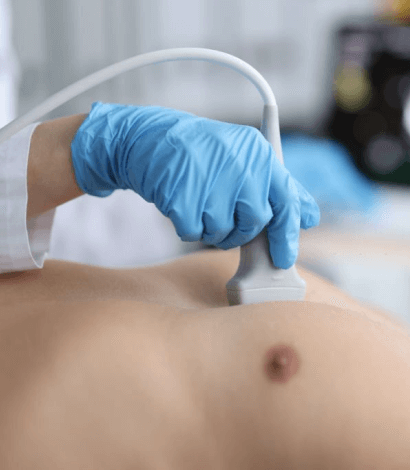Cardiovascular Imaging
& Diagnostics
Cardiac imaging provides pictures of your heart and cardiac vessels to see how your heart is performing. The noninvasive diagnostic tests – including X-rays, CT scans, and ultrasounds – help us diagnose various heart and vascular conditions. At Cardiovascular Medicine, we offer advanced imaging tests so we can successfully treat and manage all types of cardiovascular diseases.
When to See a Cardiovascular Specialist
If you are at risk for heart disease or have symptoms that concern you, our comprehensive testing can help identify any issues. Conditions that we diagnose with cardiac imaging include:

Diagnostic Testing
Our range of cardiac diagnostic tests can provide the information you need to make informed decisions about your healthcare. Deciding which test is right for you will depend on several factors, including your symptoms and individual circumstances. Our diagnostic testing options include:
Cardiovascular Treatments
We offer an array of procedures to treat and manage your cardiovascular condition so you can feel better. Working alongside you, we design a treatment plan that will allow you to feel better and return to doing the things you love. Our treatment options include:
Ambulatory EKGs - Holter and Event Monitors
What is an Ambulatory EKG?
An ambulatory electrocardiogram (EKG) records the electrical activity of the heart. Ambulatory cardiac monitors allow us to monitor your heart's electrical activity as you go about your normal activities, providing a more complete picture of your health.
Ambulatory EKGs are crucial cardiac imaging tools that are useful in diagnosing a range of heart conditions. Since they are worn continuously, they can detect important changes that may not show up in a clinical setting. You can wear them for days or weeks if needed.
We offer two types of ambulatory EKGs: holter monitors and event monitors. Holter monitors continuously record your heart's activity for 12-24 hours, while event monitors can be worn for up to 30 days and are activated when there are serious rhythm disturbances or when you have symptoms. With both monitors, your heart rhythm is wirelessly transmitted to a monitoring center for evaluation.
What to Expect During a Screening
The type of ambulatory monitor we recommend will depend on your particular situation. We will also consider your preferences and other factors, such as your job.
We recommend bathing before the test, as you will not be able to remove the electrodes until the test is complete. Don't use any type of lotion, cream, or other skin products on your chest, since that could interfere with the electrodes sticking or picking up heart activity. Wear a loose, comfortable shirt so it is easy to remove when placing the electrodes.
Recovery
Risks & Side Effects
Am I a Candidate?
Ambulatory EKGs offer a painless, non-invasive way to detect and diagnose a variety of heart conditions. They are generally not recommended for those considered low-risk who don’t have symptoms.
Your doctor may recommend cardiac monitoring if you are experiencing certain symptoms. These symptoms may include:
- Irregular heart beat (fast or slow)
- Dizziness or faintness
- Heart palpitations (thumping or fluttering heartbeat)
- Chest pain
More on Ambulatory EKGs
Reasons You May Need an Ambulatory EKG
We recommend cardiac monitoring for a range of symptoms and conditions. Some of the reasons for an ambulatory EKG include:
- A fast, slow, or irregular heart beat
- Dizziness, faintness, or a feeling that your heart is racing or skipping beats
- To see how well certain medications are working to control the heart rhythm
How an Ambulatory EKG Works
A specially trained member of our staff will attach the monitor and instruct you how to use it. First, we will place electrode patches on your chest, attached to wires that connect to the monitor. To ensure the electrodes stay in place, we’ll clean your skin with alcohol first and shave any hair, if needed. You'll carry the monitor in a small pouch that hangs from your neck, or you may wear it on the waist. We will ask you to keep a diary of your activities and symptoms during the test.
Placing the holter monitor takes around 15 minutes, and hooking up the event monitor takes about 30 minutes.About Ambulatory Cardiac Monitoring
Meet Your Illinois and Iowa
Cardiovascular Physicians
CVM Locations
Insurance Providers We Accept
In Search of Care? Request a Consultation Today



